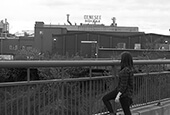Peter Pincus
On a Tuesday at Peter's studio
Interview No. 133
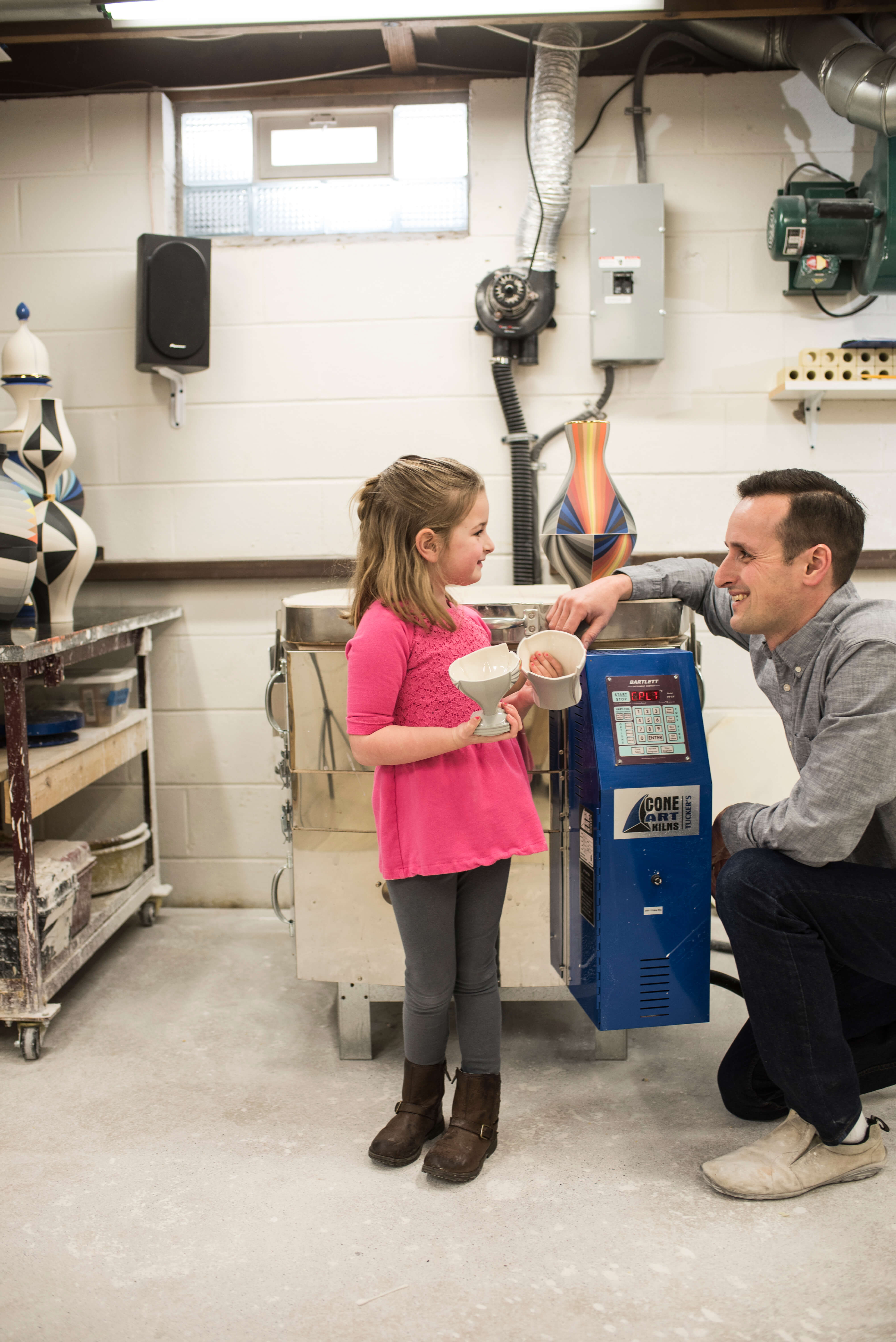

Interview by Emily Hessney Lynch.
Published May 17, 2018.
Where are you originally from?
Rochester born, raised in Pittsford. I remember feeding ducks in Schoen Place with my Grandmother, years before that area became built up with new construction offices and hardscaped seating areas. I’m a graduate of Alfred University, where I studied ceramics, metal fabrication, and glass. After school, I moved to Mendocino for an Artist Residency program, then returned to Alfred to get an MFA in Ceramics. I met my wife, Laurie, at Alfred. We’ve since made Penfield our home. I travel frequently, yet I have no desire to live outside Rochester. Rochesterians have an appealing open-mindedness, that is balanced by economic, social, ethnic, and philosophical diversity.
What is your favorite part of living in Rochester?
I love the relationship between water and land; you can quickly travel from Lake Ontario to the Finger Lakes and experience differences in landscape and culture. It feels open and airy in this region, and everything is so accessible. The cocktail revival has taken hold of Rochester – there are fantastic places to eat and drink. That magical first day of summer; the first day of snow; the first day when the leaves have changed. There’s a lot to it. And lots to do. It’s a clean, manageable, functional city.
As a person with a career in the arts, I feel I was given an upper hand by growing up here. There are so many excellent places to study, plus great mentors and supporters. And it’s not just within visual arts! It’s also in music, writing, science, and technology
What are some of your favorite/secret Rochester spots?
Inspired by my neighbor’s Japanese Maple tree, I became interested in gardening and planting one of my own. While learning more about them, I found Oriental Garden Supply. It’s a really exceptional store in Mendon that sells unusual, rare plants. Even if you don’t want to buy anything, you could still spend the whole day exploring there. That environment has such a calming effect on me.
Turning Point Park is wonderful. We like to let the kids run on the boardwalk. It’s magnificent in the fall! Webster Park is another one--we get in the car and drive up to Lake Ave, and then drive out to apple orchards towards Sodus. You feel as though you disappear as you get closer to Sodus, and it feels at times like we’re driving through Northern California
Cheshire in the South Wedge at 5:30pm on a Thursday--they make great cocktails in a wonderful environment. Nothing beats the mood of that place.
What are some of the most unique events you've been to in Rochester?
- The Flower City Pottery Invitational -- It’s a partnership between myself, Richard Aerni, Matt Metz, and the Flower City Arts Center. 20 potters from around the country each bring about 100 pots to show and sell. It’s almost like a museum, except you can grab and touch and collect everything. It takes place in mid-October every year--come say hi!
- Mighty Machine Mania -- In Fairport, they bring out all the diggers and backhoes in the summertime and kids get to play on and experience them. There’s nothing like seeing the joy on a child’s face as they climb into a fire truck!
- The 4th of July fireworks in Penfield across from the Wegmans parking lot.
- WALLTHERAPY -- This is one of the best things going on in Rochester right now. It’s changing how we think about art, architecture, and our relationship to the city.
- Lovin Cup has tons of great events and does an awesome job exposing people to music.
- Lilac Festival – I could do without the actual festival, but the blooming lilacs and gorgeous maple trees! So gorgeous.
Describe your dream Rochester day.
It would be warm and sunny. First stop, the public market. Then, Laurie and I would take the kids to Fairhaven Beach State Park for a swim and some beach time, followed by grilled chicken wings with tiger sauce at the Pour House – the best wings in town. Afterwards, we’d go for a walk on the canal in Fairport or Pittsford, then have ice cream at Pittsford Dairy. From there, we’d drop the kids off with grandparents and grab cocktails at Cheshire, then dinner at Revelry. Then we’d head home and go for a walk around our neighborhood.
What's your favorite neighborhood in the city?
You can’t beat the architecture in Brighton, Highland Park, Park Ave, and East Ave. Laurie and I have a bias toward Edgerton Street, which is where we first lived together. But to travel from Edgerton up to East then all the way from the city to Fairport you see so much architectural diversity. Beautiful Tudors, gorgeous old brick mansions, Colonials, Victorian, and Craftsman style homes.
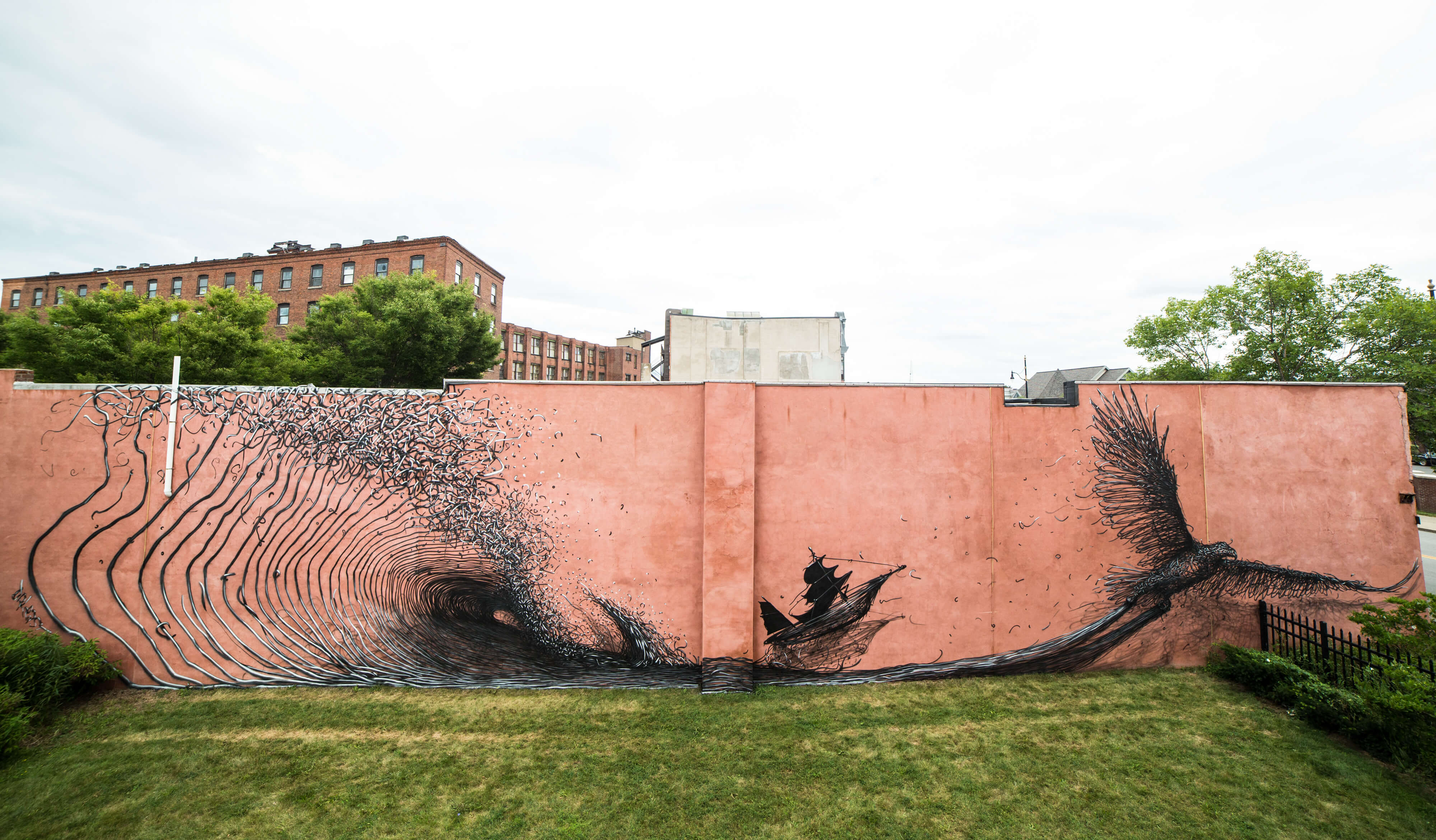

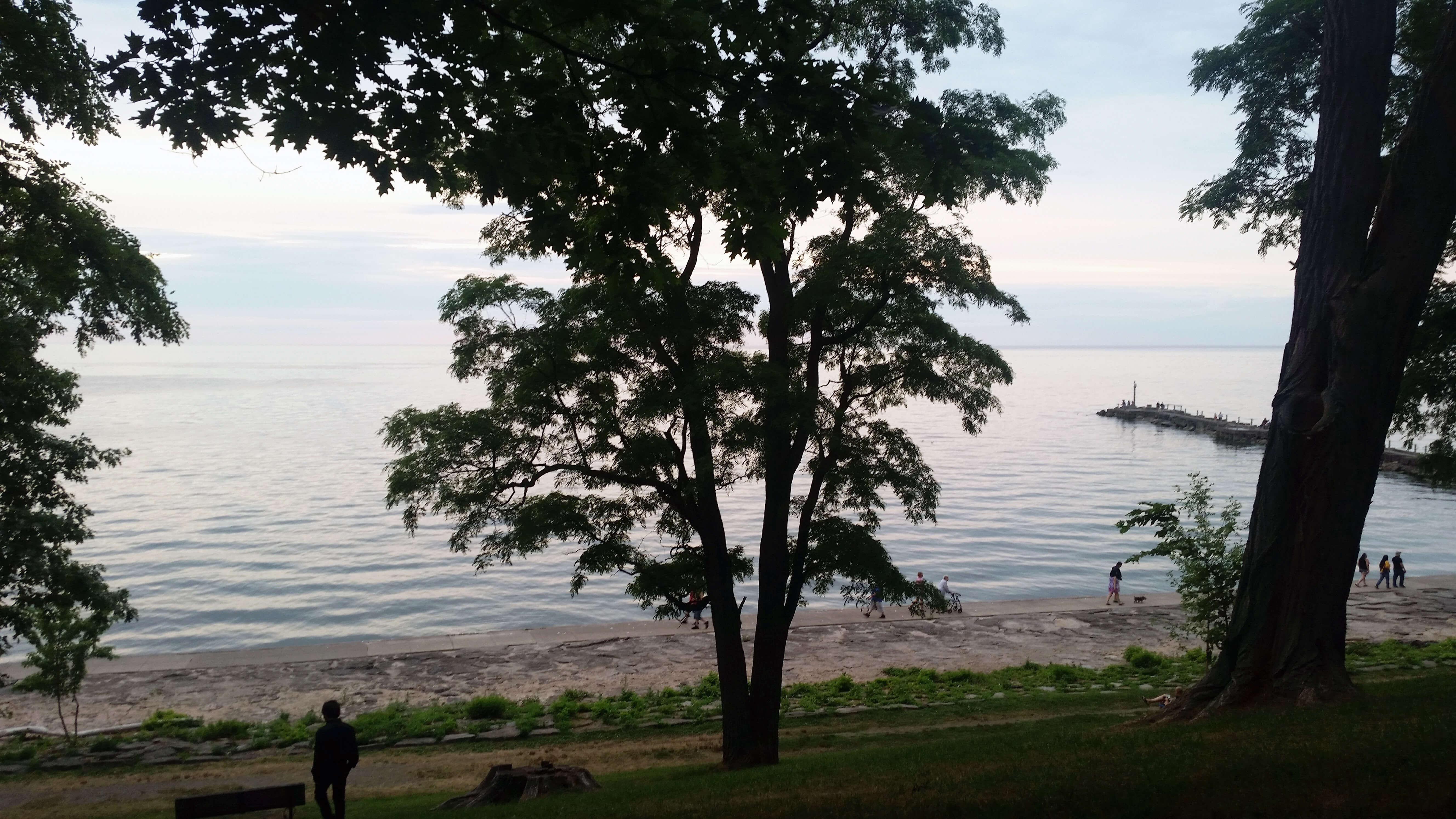

What is your personal coping mechanism for cold/gray weather?
I work a lot from November until the sun returns. Right now, it’s the end of the school year at RIT and also it’s a busy time in the gallery world. It’s motivating to know that beautiful weather is the reward at the end of a big push.
Though we’ve had a tough year with this April snow nonsense, we have to be mindful of what the rest of the country goes through--we don’t face the kinds of natural disasters that other regions face. Our harsh winters give us lush conditions for the rest of the year. It’s all worth it when the first day of 65 degree weather arrives.
What is your favorite Rochester memory?
The ice storm of 1993. The Labor Day Derecho of 1998 – that crazy microburst storm that toppled countless trees and power lines throughout the greater Rochester and Syracuse region. These storms function as instant reminders of our relationship to nature, and what it means to be human. It is in the aftermath of these storms that community becomes community. People come together, we fix things, and we spend time together. It’s really refreshing. Our next door neighbors are some of our closest friends. As soon as a new storm comes, we’re together to experience it.
What makes Rochester unique?
Artists have a unique opportunity to build a business here; there’s balance between academic and community institutions, the size of our city makes it manageable yet resourceful, and the proximity to Philadelphia, Boston, and New York makes it possible to work here and have a presence there.
There’s also a certain type of pride here. I have the privilege of traveling a lot to teach workshops, and we just have this unusual kind of pride for our region, relative to other places. The obsession we feel for this place makes us our own unique feature.
Another interesting aspect of Rochester is that, in my opinion, we weren’t as affected by the 2008 recession as other cities. Perhaps due to the fact that we survived Kodak’s collapse, we were more prepared to weather the recession. Smaller business, tech and other, were spreading roots. You could feel something growing here even at that difficult economic time. Kodak’s struggle created a golden opportunity for new businesses to grow.
What do you think could be improved?
In Minnesota there is an event called the St. Croix Pottery Tour, where $500,000 in handmade pots sell in a single weekend. There, pottery has become an essential part of Minneapolis culture, not the craft community within Minneapolis. Here, we don’t see the same broad support or interest in the visual arts. Rochester people are eager for creativity – just look at the attendance at the Jazz Fest every year, or attendance in Performing Art venues – but interest in painting, sculpture, craft, etc. is yet to be embraced fully, or even significantly, by Rochester. In my belief, pots are how we understand culture and history, both past and present, and that is a very difficult concept to convey in Rochester.
An exception- Rochester has a big problem with heroes. We enjoy being associated with a few creative people we feel have exceptional recognition. We cater to the big fish, while accepting that we often receive little in return. Meanwhile, there’s a phenomenal collection of artists and arts educators that are teaching and making and building a more vibrant city. An improvement, which is happening, would be more support and recognition for those individuals and institutions.
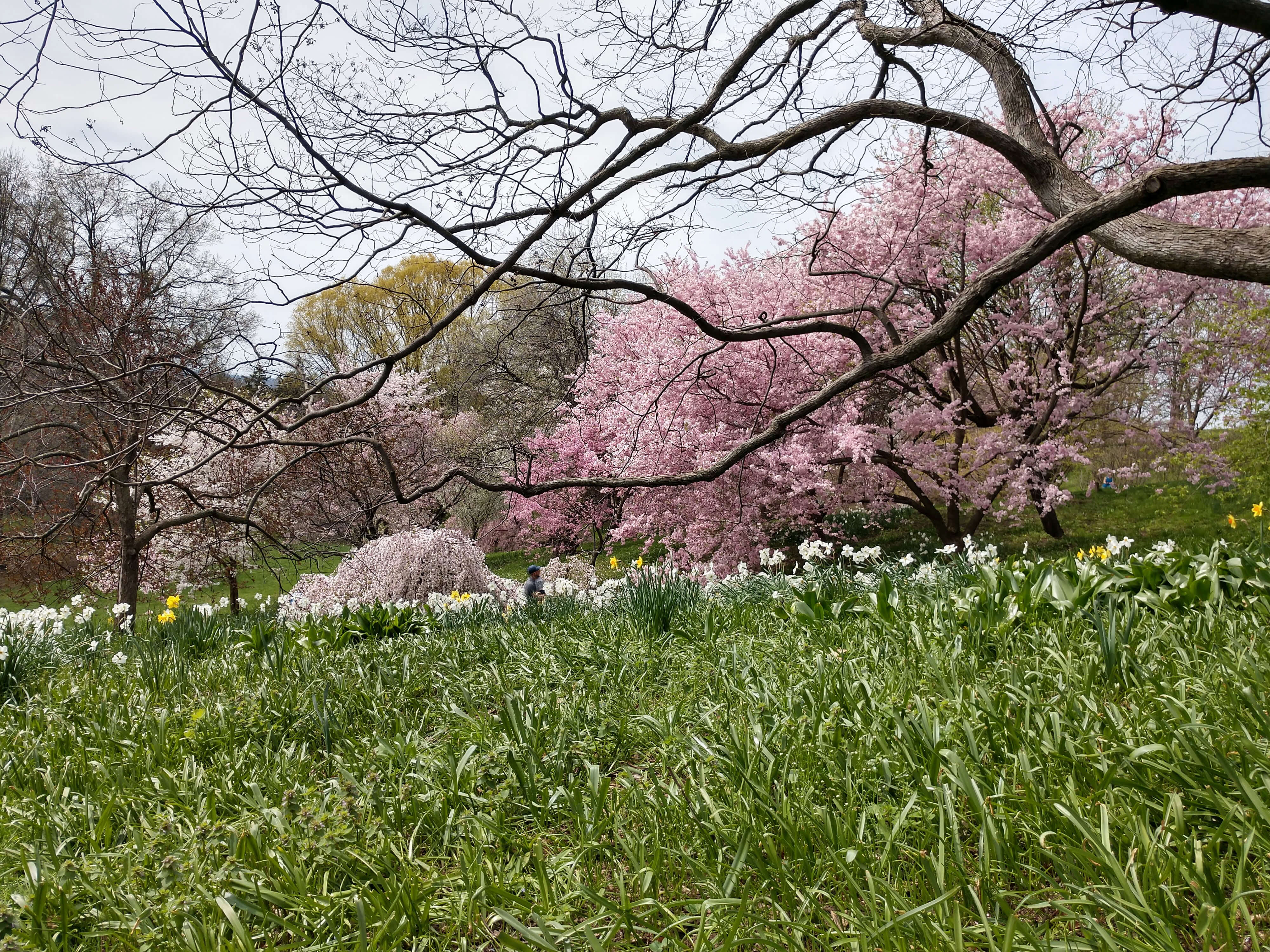

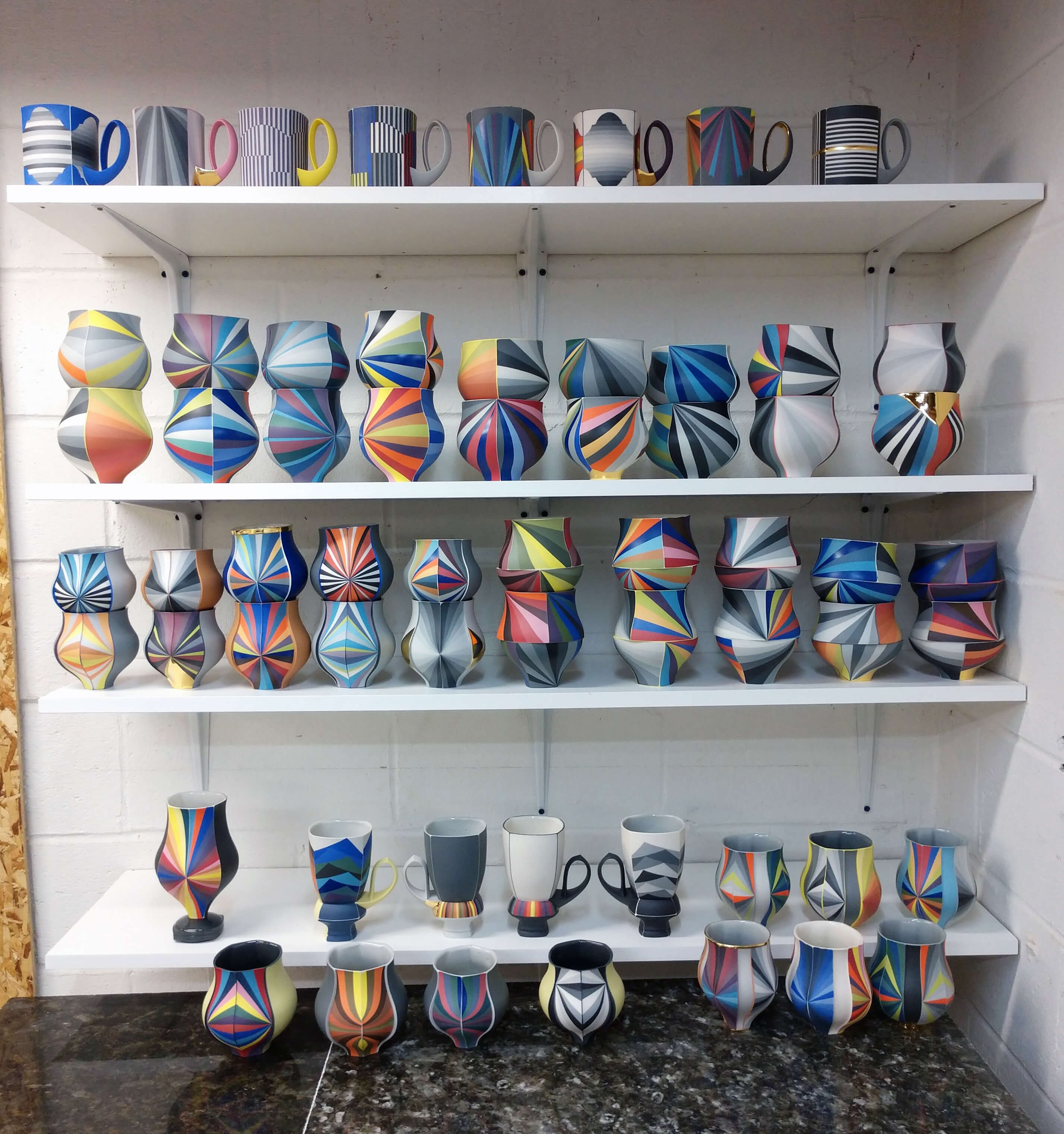

If Rochester was a food, what would it be?
We’d be a bag of flour (pun intended). Flour has the ability to sustain so many things, and you can mix it up with other ingredients and create something great, distinct, and different from scratch.
How did you know you wanted to pursue ceramics as a career?
As a teenager, I was somewhat troubled, and I wasn’t academically driven. I took a ceramics class and my life changed overnight. I was loaned a potter’s wheel, which I used in our basement, and it took me out of social situations and instead gave me something to work on every day. I became a better student because I had to finish my homework before making pottery. I found out that I could go to college and make pottery at Alfred, which is the best school in the country for ceramics, and I fought really hard to get there.
What is your process like?
I begin on the potter’s wheel to create shapes, and when a form is complete I pour plaster around it. When the plaster hardens, I cut it on the bandsaw, often into many small pieces, and then reassemble it into a functional plaster mold. Once the mold is dry, I take it apart and build a veneer of colored casting porcelain on each of the plaster chunks, one color at a time. Once finished, I reassemble the mold and pour casting slip inside it, which sticks to the veneer and creates the form and colorful surfaces of my work.
This process was developed, quite accidentally, during grad school. It was a very unusual way of working in ceramics when I discovered it, and in many ways it led to so many of the opportunities I’ve had to establish a career. This technique allows me to produce results with a broad, bold color palette. It allows me to explore and place pottery in different contexts than you’d usually see it.
What advice would you give to creatives who are just getting started?
Be thoughtful to the people who are helping you get your start and to the people around you who have different beliefs. Be a student as long as you can. It’s hard to balance an overly developed sense of self with the needs of others--but focusing only on yourself is a dangerous proposition. The hard work is finding a way to connect with your creative interests and also to helps others connect with theirs.
Work hard, be clear in your thoughts, and you will succeed. It’s just a matter of time. And remember, you must care as much (if not more) about others as you do about yourself.

